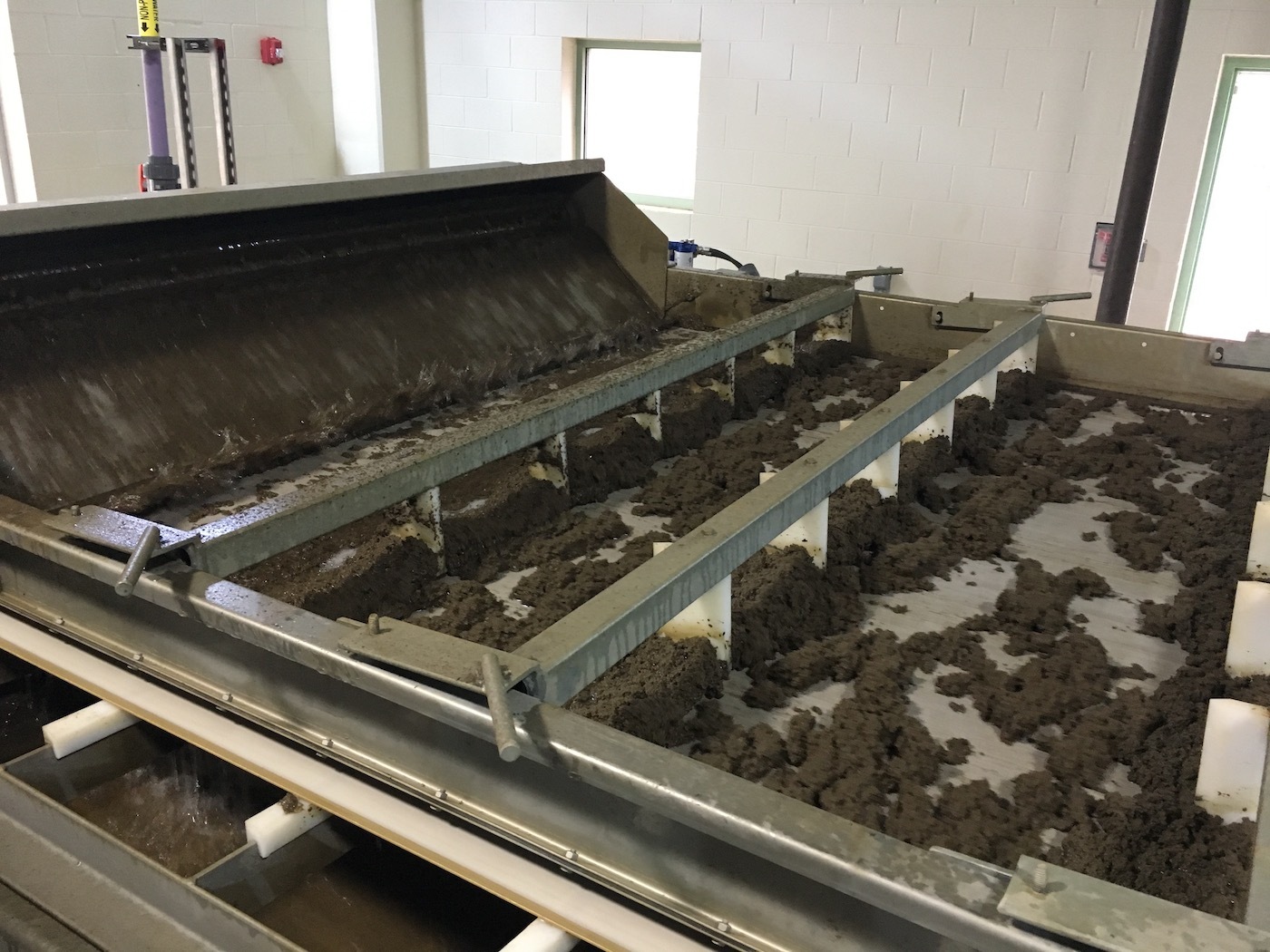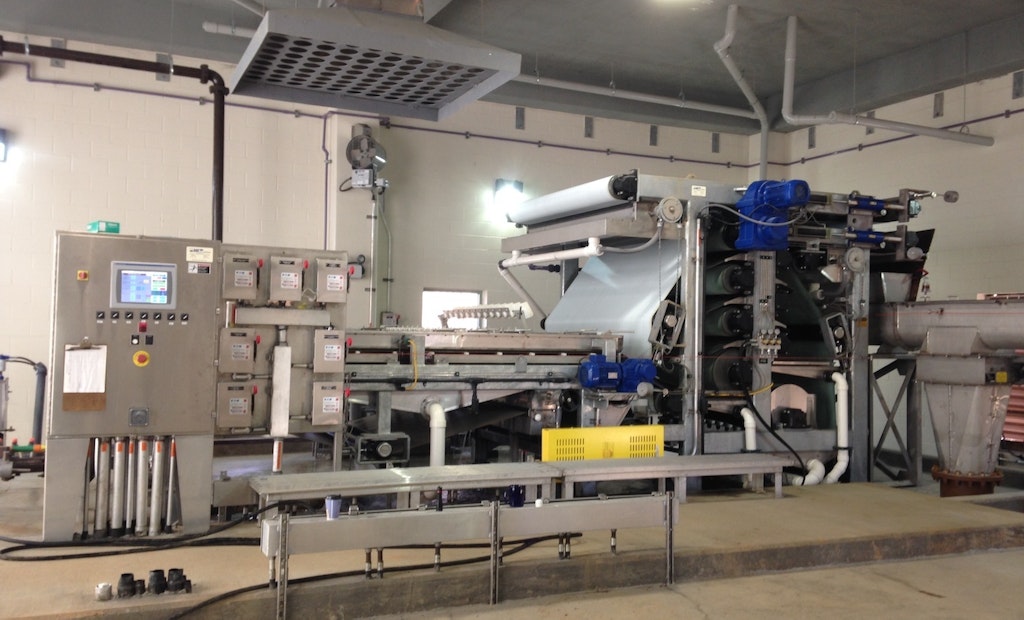Interested in Dewatering/Biosolids?
Get Dewatering/Biosolids articles, news and videos right in your inbox! Sign up now.
Dewatering/Biosolids + Get AlertsDual mode belt presses and screw presses save capital cost and footprint. They also reduce the amount of ancillary equipment required by doing both thickening and dewatering functions on a single piece of equipment. The independent gravity belt section of the belt press accomplishes the same task as a stand-alone GBT. When running in “thickening mode,” only the independent gravity section is operating. When running in “dewatering mode,” the independent gravity section and the pressure section both operate. Switching from thickening mode to dewatering mode is as simple as flipping a switch, and pressing a button on the touch screen.
The Town of Hillsborough Wastewater Treatment Plant chose a Dual Mode 3DP Belt Press for their thickening and dewatering needs. The town was interested in this technology due to the savings in upfront capital cost and lower O&M costs due to less ancillary equipment. This plant produces aerobically digested sludge that is fed to the dual mode machine. The plant typically thickens at a rate of 400 gpm in the mornings, then switches to dewatering at a rate of 1,200 pounds per hour in the afternoon. The flexibility of the dual mode machine makes it a great option for many plants.

Visit the BDP Industries, Inc. Storefront






